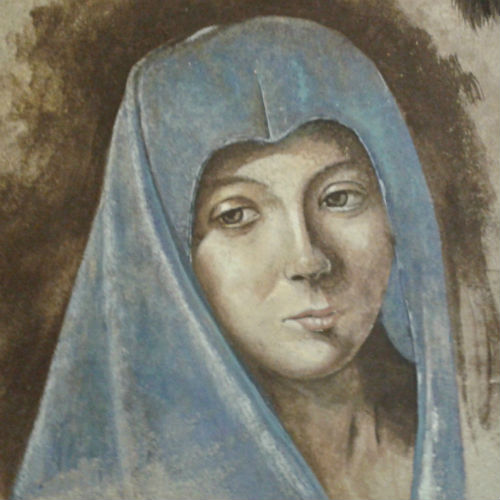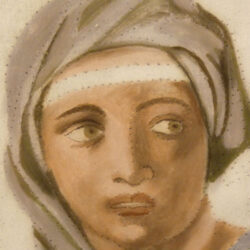Fresco is one of the oldest painting techniques. It was invented by the Egyptians who later taught it to the Greeks. But it was only in the 14th century, thanks to the Italian painter Giotto, that the fresco technique gained more and more importance among the Fine Arts. The most peculiar quality of fresco painting lies undoubtedly in its making: the pigment – a natural material – is laid on a fresh plaster several times in a short lapse of time, and through a cohesion process it fixes itself in the plaster, creating warm and subtle tones. The artist can make no mistakes, as correcting them would imply destroying the whole work. That is why the fresco technique is particularly difficult to learn and master. The fresco course lasts normally 4 weeks and is held Monday through Tuesday. It is also possible to attend this course for shorter or longer periods. In order to insure the highest quality of tuition, the number of students will not exceed 7 per group. The program Preparation of the “arriccio”, i.e. the laying of mortar (a mixture of lime and sharp sand) on the lathwork. This operation has to be repeated twice and it is followed by the laying of plaster (a mixture of lime and fine sand). A drawing is sketched on cardboard. The drawing is then perforated along its outlined and pounced over the plaster. As a result, a “sinopia” will appear on the plaster. The sinopia has to be divided into two or more parts according to its size; every part will be later painted in individual sessions. The last step is the “plaster finish”, i.e. the laying of a mixture made up of sieved sand and slaked lime, which has to be smoothed accurately with a trowel before finally starting to paint. The plaster is ready for painting with pigments. Upon request it is also possible to study different Fresco techniques such as “sgraffito” or “scraffito”. It is possible to spend part of the course to the technique of the “sgraffito” or “scraffito”: it is a technique produced by applying layers of plaster tinted in contrasting colours and then scratching so as to produce an outline drawing. Part of the course can be dedicated to learning how to detach a fresco off the wall thanks to a special glue (rabbit glue) which allows to fix the fresco painting onto another panel. Tuition fees FC1, 1 week, 14 hours €400 FC1, 1 week, 20 hours €460 All Materials except colours (pigments). If you wish to take away the tiles on which you painted your frescoes, you will be requested to pay: 20-hour per week programme: 11.30am-1pm and 1.30pm-5pm Mon-Thu.The oldest painting technique
Given this complexity the fresco course is recommended to those students who have already acquired basic artistic skills or who have already attended the first 3 units of our Art course.
Arriccio
Cardboard
Sinopia
Plaster finish
Painting
Sgraffito
Tear technique
Price
14 hours per week
FC2, 2 weeks, 28 hours €590
FC4, 4 weeks, 56 hours €990
FC12, 12 weeks, 168 hours €279020 hours per week
FC2, 2 weeks, 40 hours €790
FC4, 4 weeks, 80 hours €1320
FC12, 12 weeks, 240 hours €3790Course price includes
A certificate at the end of the course.
– 10 Euro for each big tile;
– one small tile is free, from the second tile the cost is 5 Euro each.Schedule
14-hour per week programme: 1.30pm-5pm Mon-Thu (afternoon option) or 10am-1pm Mon-Thu + 11am-1pm Fri (morning option).
It is possible to start Fresco classes every Monday.














